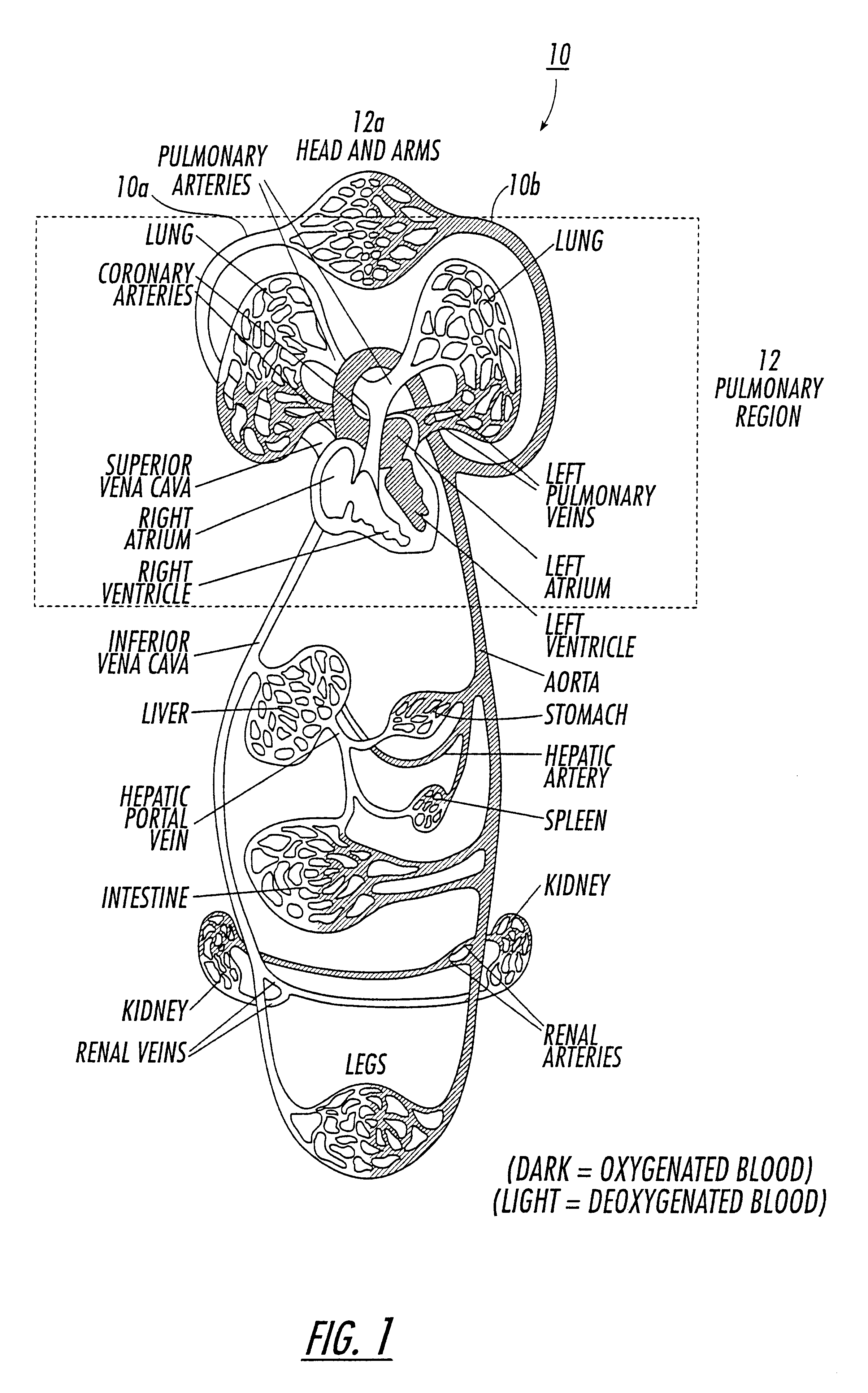Diagnostic procedures using 129Xe spectroscopy characteristic chemical shift to detect pathology in vivo
a technology of characteristic chemical shift and spectroscopy, which is applied in the direction of magnetic variable regulation, measurement using nmr, instruments, etc., can solve the problems of insufficient dose delivery to more distant (away from the pulmonary vasculature) target areas of interest, insufficient inhalation or ventilation delivery, and insufficient quantifiable information from experiments, so as to reduce the impact of certain potentially data-corrupting parameters
- Summary
- Abstract
- Description
- Claims
- Application Information
AI Technical Summary
Benefits of technology
Problems solved by technology
Method used
Image
Examples
example
Xenon-129 NMR Spectroscopy in Human Aortic Tissue
Background
The well-established property of the .sup.129 Xe nucleus to respond to changes in the environment with a change in NMR-resonance frequency led to a proposal that the lipid-rich atherosclerotic plaques in humans could be detected by measuring the chemical shift of the xenon signal. .sup.129 Xe spectra have been recorded in human tissue at 7 T and 25 bars of pressure. The .sup.129 Xe was thermally polarized for this experiment.
Method
Samples of aortic wall were taken from recently deceased humans, unfrozen but kept on ice. The innermost layer of the aortic wall, the intima, was dissected by lifting by tweezers and gently cutting it free with a sharp scalpel. The tissue was sliced into pieces of a few mm. Then, for each patient, a control part of "healthy" vessel wall was taken and compared to plaques cut out the same way. The plaques were scored on a graded scale ranging from 1-5 with grade 1 representing totally soft, fatty de...
PUM
 Login to View More
Login to View More Abstract
Description
Claims
Application Information
 Login to View More
Login to View More - R&D
- Intellectual Property
- Life Sciences
- Materials
- Tech Scout
- Unparalleled Data Quality
- Higher Quality Content
- 60% Fewer Hallucinations
Browse by: Latest US Patents, China's latest patents, Technical Efficacy Thesaurus, Application Domain, Technology Topic, Popular Technical Reports.
© 2025 PatSnap. All rights reserved.Legal|Privacy policy|Modern Slavery Act Transparency Statement|Sitemap|About US| Contact US: help@patsnap.com



